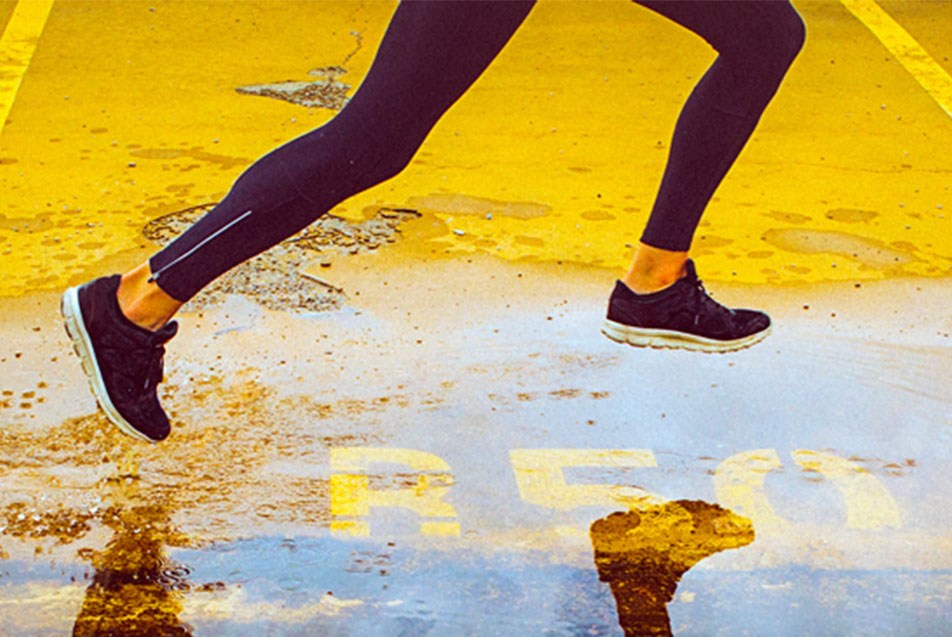
Thousands of athletes, young and old, male and female, novice and advanced, will lace up their running shoes for the Fort 4 Fitness Fall Festival events September 30 - October 1. That means many are reaching the height of their training, and feeling the effects of all those miles. Minda Lemmon, physical therapist, TherapyONE, is here to address five of the most common trouble areas for runners and walkers, and offer her advice for alleviating the discomfort. (Plus, don’t miss her recovery tips at the very end of the post!)
HIP

What causes hip pain? Typically hip pain is caused by Iliotibial band syndrome, hip flexor tightness and gluteus medius weakness.
How can it be treated? If caught early, stretching, foam rolling and strengthening will alleviate these problems.
Any tips for prevention? Every runner should be cross training, scheduling a rest day, stretching, foam rolling and strengthening.
Run through it or rest? At the first sign of pain, cut back the mileage, avoid hills, and if the discomfort continues, see a physician.
KNEE

What causes knee pain? Typically runner’s knee is caused by patellofemoral pain syndrome. Often, weak quads and hamstring tightness cause patellofemoral pain. In addition, this in turn may be a result of Iliotibial band syndrome, hip flexor tightness and gluteus medius weakness. Knee pain could also be a symptom of a biomechanical problem of the patella location in the femoral groove, worn cartilage, high-arched feet or flat feet.
How can it be treated? If caught early, stretching, foam rolling and strengthening will address these problems. In addition, I would advise having a running analysis performed and being properly fitted for shoes at a running store. (3 Rivers Running Company and Fleet Feet Sports Fort Wayne are great options.)
Any tips for prevention? To prevent runner's knee, run on softer surfaces, keep mileage increases less than 10 percent per week and gradually increase hill work.
Run through it or rest? At first sign of pain cut back your mileage, avoid hills and, if the discomfort continues, see a physician.
SHIN SPLINTS

What causes shin splints? Over pronation, inadequate stretching, worn shoes and running on uneven ground.
How can they be treated? Properly stretching, foam rolling, self-massage, icing and proper-fitting shoes and/or orthotics.
Any tips for prevention? Thorough stretching, foam rolling, wearing proper shoes, increase mileage less than 10 percent a week and schedule a rest day.
Run through it or rest? Typically, if the pain is over a 3 out of 10, cross train until the pain has subsided and if it persists for more than 2 weeks seek the care of a physician.
ANKLE

What causes ankle pain? The most common source of ankle pain in runners is Achilles tendonitis. Also, tight or fatigued calf muscles, caused by not stretching, mileage increases, overtraining, hill running, speed work or poorly fitting shoes, can cause discomfort.
How can it be treated? Stretching, properly fitted shoes, foam rolling, self-massage and icing.
Any tips for prevention? Stretching, increase mileage 10 percent a week, wear properly fitted shoes, foam rolling and icing.
Run through it or rest? If the pain continues while running, I suggest taking time off and cross training until it subsides. If the runner has a question of a possible stress fracture or they rolled the ankle while running, then I suggest seeking physician care prior to returning to running.
BLISTERS

What causes blisters? Blisters are caused by friction. Typically blisters are caused by poor-fitting shoes or non dri-fit socks.
How can they be treated? If it is a large blister, drain it with a sterile utensil, cover it with a bandage and keep it clean. If it is small, leave it intact and cover it with a bandage or moleskin. A blister under a nail is best treated by a physician.
Any tips for prevention? Blister free socks, coat areas that are common for chafing with a "glide" or non-chafing lubricant, and be sure to wear properly fitted shoes.
Run through it or rest? Mild blisters properly covered will be okay to run through. For severe blisters, treated by professionals, the runner should follow the physician’s instructions.
Sweet relief.
In addition to the suggestions above, I would recommend:
- Ice baths – These were a big game changer for me when I was running high miles (over 13). I would sit in the ice bath for 10-15 minutes after the run.
- Epsom salt – Add a bit to your ice bath or a warm bath, if you prefer.
- Tart cherry juice – There’s a lot of buzz around the consumption of tart cherry juice post-run as a great way to reduce inflammation and soreness.
- Hydration – It is very important to be hydrating properly, using electrolyte replacement and recovery drinks.



